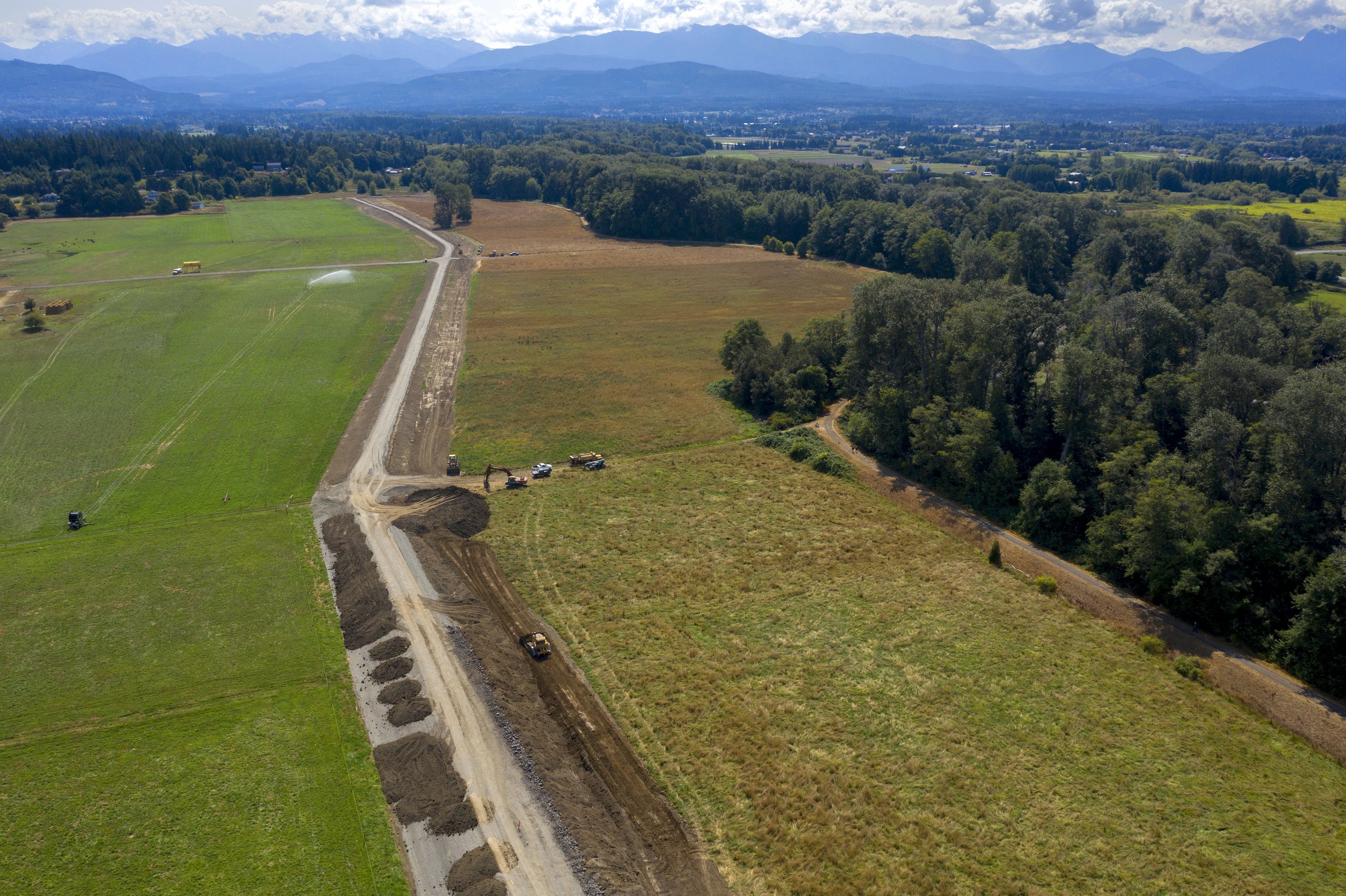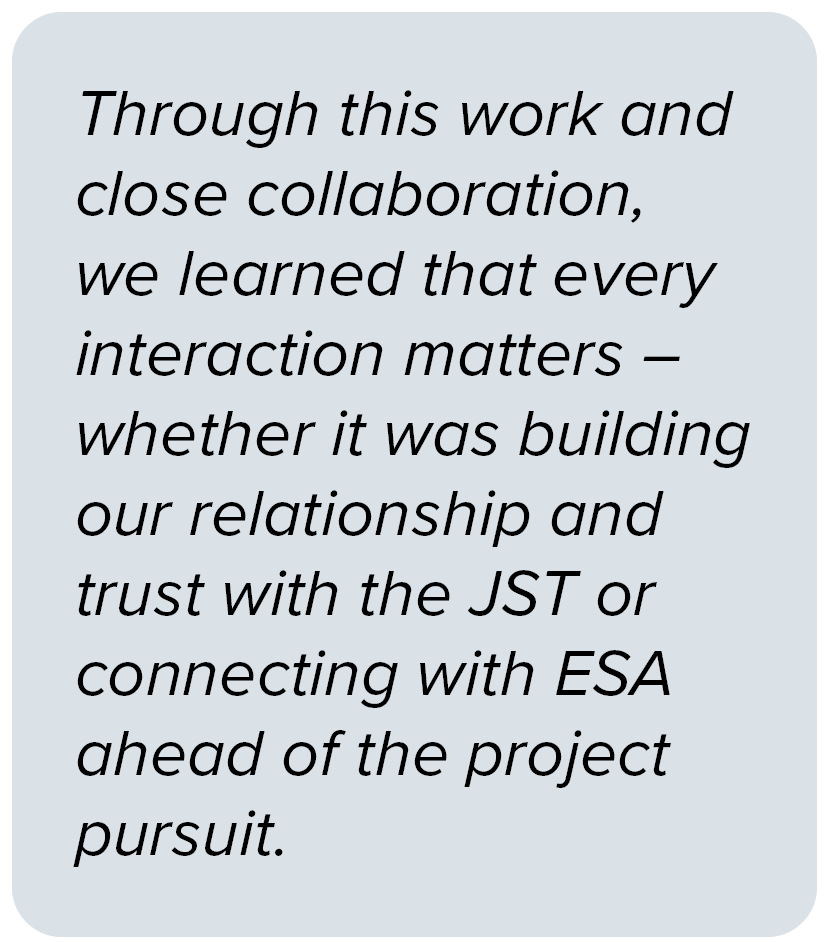The Seattle Section of the American Society of Civil Engineers (ASCE) honored the Jamestown S’Klallam Tribe’s (JST) Rivers Edge Levee Setback project with its 2022 Local Outstanding Civil Engineering Achievement Award (LOCEA) in the Geotechnical category.
The project replaced an aging, constricting levee on the Lower Dungeness River near Sequim with a new levee setback designed to meet modern flood protection standards and aligned to restore the area’s natural floodplain and salmon habitat. Work completed on a compressed, whirlwind schedule. JST acquired the land and started preliminary design in mid-2020, and by September 2021, they’d completed final design, successful navigation of a complex series of permit applications and design reviews, and substantial construction—a monumental feat in just 14 months.
The new levee was constructed in part with gravel from a nearby quarry pit, limiting the cost, time, and environmental impact of importing materials to the site. The project was done in tandem with an adjacent similar levee project by Clallam County, and together they will open up 143 acres of reclaimed floodplain and habitat. You can learn more about the Rivers Edge project in our previous blog post.
Aspect led geotechnical engineering design and construction of the levee as a subconsultant to Pat McCullough and his firm Engineering Services Association (ESA), alongside WEST Consultants for hydrology and hydraulics.
Aspect’s Project Manager and Lead Geotechnical Engineer Andrew Holmson and Project Geotechnical Engineer Mari Otto gave a short presentation on the project during the LOCEA virtual awards ceremony on Wednesday, March 9.
Other LOCEA Winning Projects
Aspect was also on the winning teams for two projects as geotechnical subconsultants to our frequent teaming partner Osborn Consulting:
The City of Kenmore’s new boathouse on the Sammamish River won in the Small Projects and Non-Construction Studies category. We provided foundation redesign support and services during construction of the two-story prefab metal building that is the new home for the Kenmore Community Rowing Club and Northshore School District rowing programs.
The City of Sammamish’s Ebright Creek Fish Passage Culvert Replacement was honored in the Water Resources category. Aspect led the geotechnical evaluation for design and construction of two new 30-inch-diameter culverts along busy arterial East Lake Sammamish Parkway. Replacing the outdated culvert was a priority for the City of Sammamish to enhance fish passage and habitat for kokanee salmon. Construction was completed in fall 2021, and the City has already seen an increase in returning kokanee and other fish species passing through this stretch of the creek.
This year’s other LOCEA winners honored during the ceremony were:
Climate Pledge Arena Renovation (Thornton Tomasetti) – Structures
Northgate Link Extension (MJA) – Transportation and Development
2021 Airfield Pavement Replacement + Infrastructure Upgrade Project (HNTB) – Transportation and Development
Seattle-Tacoma International Airport North Satellite Modernization (AECOM) – Transportation and Development










